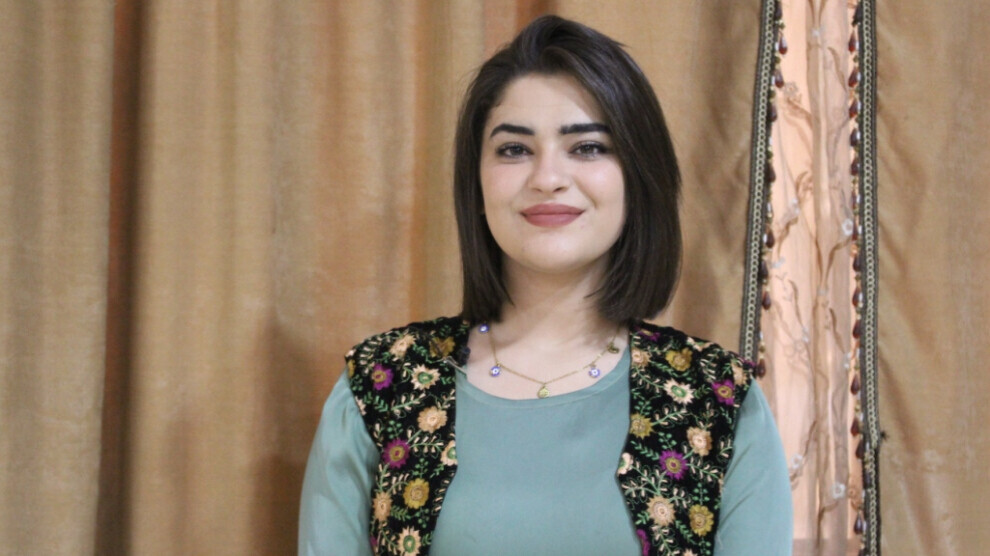‘I express what my society has experienced through lyrical dance’
Îzdihar Tahir, who has been interested in dance since her childhood, expresses what her society has experienced through lyrical dance.

RONÎDA HACÎ
Hasakah- Lyrical dance, a dance style that embodies various aspects of ballet, jazz, acrobatics, and modern dance, started to reach its popularity in the 1990s. This style concentrates on expressiveness of emotions such as love, joy, hurt, or anger.
18-year-old Îzdihar Tahir, living in Hasakah, a city in the Jazira Canton of North and East Syria, expresses her society’s success, suffering and culture through lyrical dance and theater.
Her family had to leave Serêkaniyê (Ras al-Ayn) in 2019, when the Turkish state and Turkish-backed factions occupied the city. Since then, her family has lived in Hasakah. “Dance is important in theater. The revolution in Rojava gave me an opportunity to improve myself and be a professional in lyrical dance. When the revolution started, I joined the children’s theater group in Serêkanîyê. I performed many theatre plays. However, I had to stop performing for a while due to the Turkish attacks on Serêkanîyê.” After being displaced from Serêkanîyê, her family settled in Washokani camp. “In the camp, we, as a group of children, formed a theatre group with the support of our teachers. We formed the Darsî theatre group in 2021.”
First professional theater artist
Îzdihar Tahir participated in Martyr Yekta Festival as the first professional theater artist and now she is a drama teacher for a group of children. “I also perform dances. I have been interested in dancing since my childhood. Before the revolution, I did not have any opportunity to perform dance on stage. However, after the revolution, I got this opportunity. We have recently worked on a dance performance for International Women’s Day. We do not use any words while performing lyrical dance but we express many emotions with our movements.”
Îzdihar Tahir improved herself in lyrical dance with the support of her teacher, Fatma Ehmed. Speaking about the Darsî theatre group, she said, “The group consists of eight women. Lyrical dance gained popularity in the 1990s. During World War II, women performed this dance to express their emotions. Today, women express their emotions through this dance.”
‘Each movement tells a story’
Fatma Ehmed teaches lyrical dance to children and women. She also writes stories. “I write stories about our society. Most of my stories are about women because women play an important role in building a free and equal society. The aim of my stories is to raise awareness in our society to get rid of the patriarchal mindset. Each movement in lyrical dance tells a story.”
